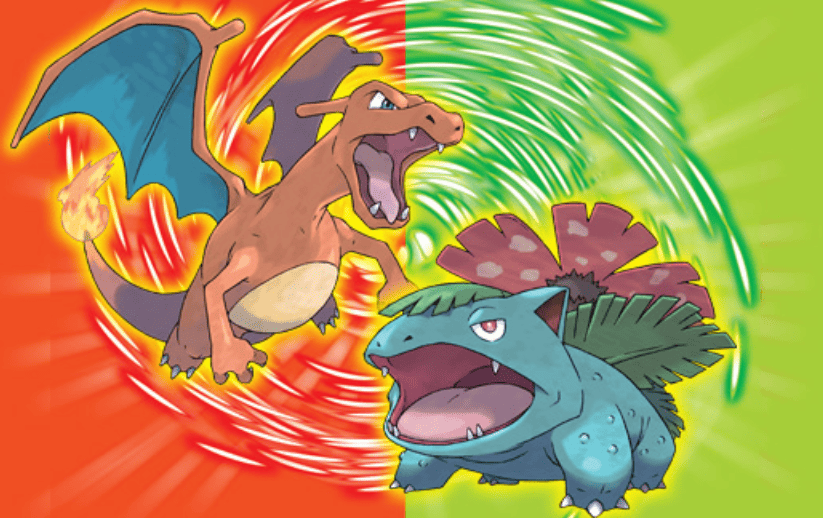Pokémon took the world by storm when the Generation 1 games, Pokémon Red and Pokémon Blue, launched in 1996 for the Nintendo GameBoy. This side-by-side release marked the beginning of an extraordinary decades-long journey that would captivate millions of players around the globe. These classic games introduced us to a world teeming with fantastic creatures known as Pokémon.
Among the 151 original Generation 1 Pokémon in the Kanto region Pokédex, quite a few have stood the test of time to become franchise icons. In this article, we’ve rounded up our picks for the ten most iconic Pokémon from the Generation 1 games. We’ll explore their designs, types, strengths, and why Pokémon fans adore them to this day.
Pikachu
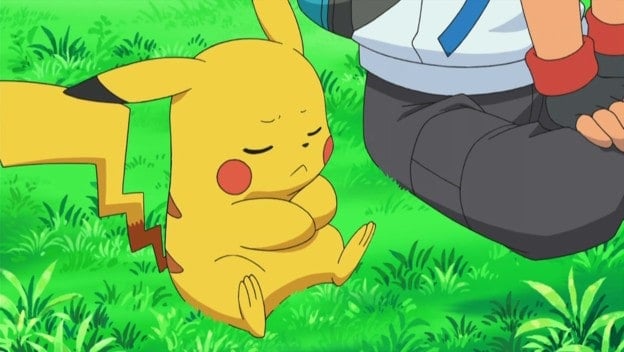
No list of the top 10 Generation 1 Pokémon would be complete without the series mascot Pikachu. This Electric-type mouse Pokémon is known for its bright yellow color and distinctive red cheeks. In Generation 1, Pikachu can evolve into Raichu when exposed to a Thunder Stone. It later received a pre-evolutionary form, Pichu, in the Generation 2 games Pokémon Gold and Silver.
Aside from being cute, Pikachu is a competent Electric-type battler. Pikachu excels in speed and special attack, making it a formidable special attacker. Its low defenses leave it vulnerable to physical attacks, however. Its Electric typing means it’s super effective against Water and Flying types but weak to Ground-type moves.
Pokémon creators had Pikachu in mind as the series mascot from the start, which explains its undeniable cuteness. It also became Ash’s loyal companion in the Pokémon animated show and is the star of the third Generation 1 game, Pokémon Yellow. Its role as the franchise’s mascot – a position it holds to this day – has made it an undeniable icon loved by fans worldwide.
Bulbasaur
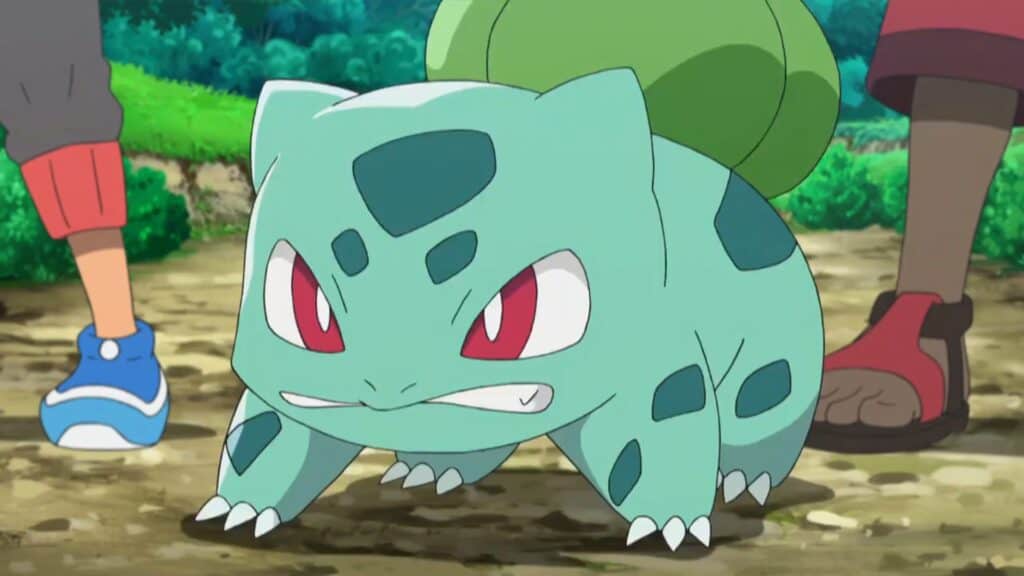
Almost every Pokémon game starts by presenting the player with an important decision: his or her choice of starter Pokémon. This starter is the first Pokémon trainers receive and will generally shape the player’s team and journey from start to finish.
In the Generation 1 games, Bulbasaur is one of the starter Pokémon and is the first Pokémon listed in the Kanto region Pokédex. Bulbasaur is unique compared to the other two starters because it’s a dual-type Grass and Poison Pokémon.
All three starters are undeniably adorable in their initial forms, and Bulbasaur is no exception, featuring a cute quadripedal appearance with a plant bulb on its back. Bulbasaur evolves into Ivysaur at level 16 and then blossoms into the majestic Venusaur at 32.
Venusaur’s combination of typing grants it few weaknesses and allows it to handle a variety of opponents. It’s an effective attacker against Ground, Rock, Water, Fairy, and other Grass-type Pokémon. Fire, Flying, Ice, and Psychic-type Pokémon are a significant threat to Venusaur. Bulbasaur’s type versatility, numerous resistances, and effectiveness against early gym leaders make it arguably the best starter choice for new players.
Charmander
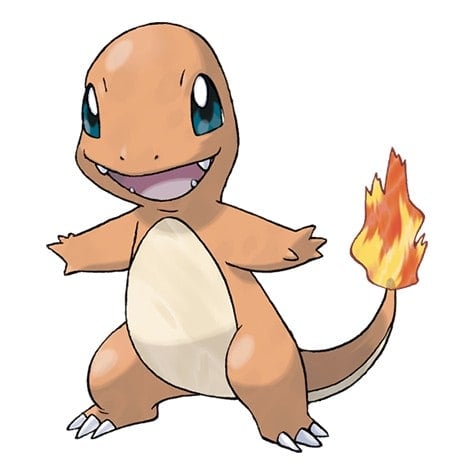
Charmander is the Fire-type Generation 1 Pokémon starter, sitting at #4 in the Kanto Pokédex after Bulbasaur and its evolutions. It resembles a small, orange, bipedal dinosaur with a flame at the end of its tail. It evolves into Charmeleon at level 16 and Charizard at level 36.
Charizard stands apart from the other starters in that it begins as a single type but has a dual Fire/Flying typing in its final evolutionary form. It boasts powerful offensive stats and a versatile move pool, making it a formidable offensive sweeper. However, Charmander is tough to play in the early game, as the Water and Rock-type gym trainers Brock and Misty will give it trouble. As a Fire-type, Charmander is vulnerable to these types, as well as to Ground-type attacks.
Charmander’s last evolution, Charizard, is arguably the most iconic final form of all three Generation 1 starter Pokémon. It becomes a powerful Fire/Flying-type attacker and is a favorite of many trainers. Charmander gains access to potent moves that make it a great offensive “spearhead” for your battle lineup.
Squirtle
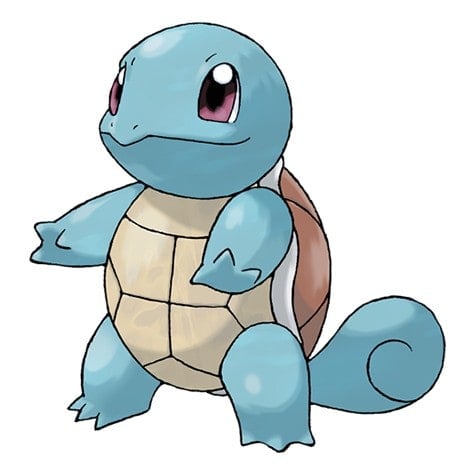
Of course, we’d be remiss if we didn’t give credit to the Water-type Generation 1 starter Pokémon, Squirtle. The adorable Squirtle is a straight Water-type Pokémon resembling a small, blue turtle with a shell and a curled tail. Squirtle naturally evolves into Wartortle at level 16 and Blastoise at 36.
In contrast to Bulbasaur and Charmander, Squirtle remains a single type throughout the game. However, water types are useful and effective against many Generation 1 Pokémon, so that’s not bad. Squirtle trainers shouldn’t have too much trouble with the first two gym leaders, so it’s a good choice for novice players to find their footing in the early game.
Blastoise’s exceptional defenses and access to powerful Water-type moves make it a stalwart battler. It’s effective against Ground, Rock, and Fire types and is resistant to Steel, Water, Fire, and Ice attacks. Trainers shouldn’t send Squirtle/Blastoise out against Grass and Electric-type Pokémon, which can pose a significant threat.
Mew
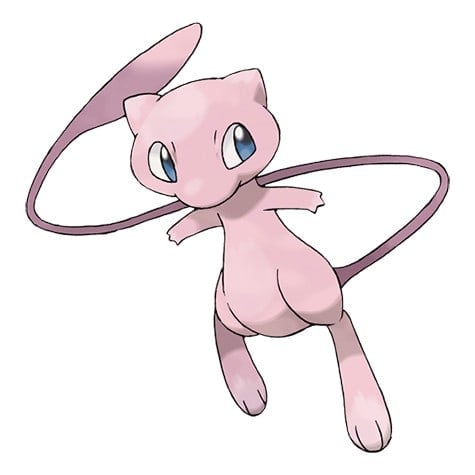
Mew is a pink, psychic-type Pokémon with a playful, cat-like appearance. It has no evolutions in Generation 1 but is related to Mewtwo. Mew’s elusive nature and role as the ancestor of all Pokémon make it a mythical and enigmatic icon in the Pokémon world.
In the Generation 1 games, Mew is notable for being one of the rarest and hardest Pokémon to acquire. It can only happen through special in-person events or cheat codes. As these special Nintendo events are long gone, cheating or hacking is the only real way to attain Mew.
Mew is a strong and versatile fighter, capable of learning an array of moves from different types. Its Psychic typing makes it effective against Fighting and Poison types. However, Dark, Ghost, and Bug-type Pokémon can exploit its Psychic-type vulnerabilities, so be wary of such attacks.
Mewtwo
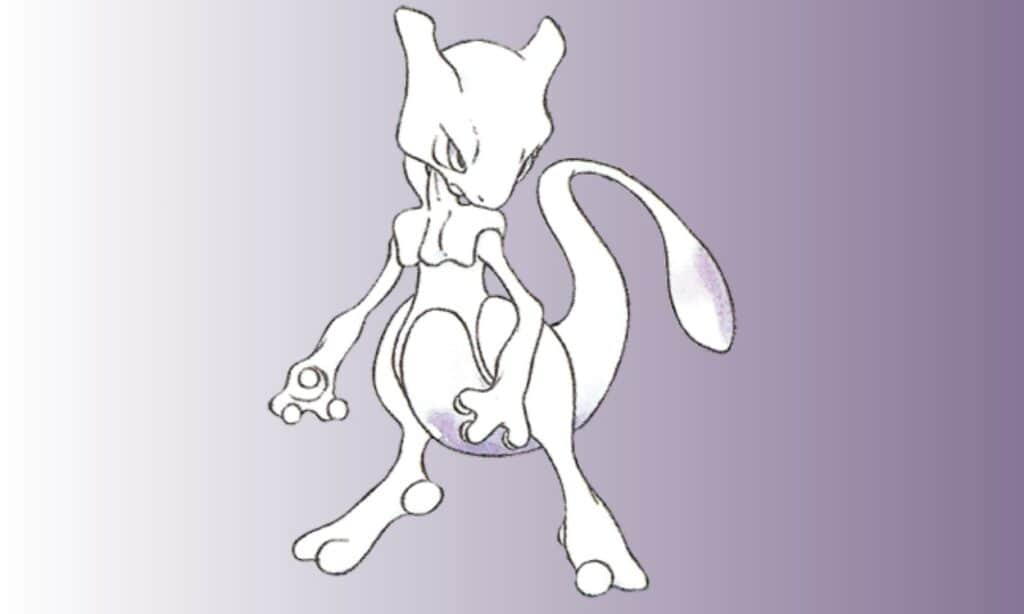
©Mewtwo
Mewtwo is a powerful, genetically engineered psychic-type Pokémon with a humanoid appearance. It does not evolve from or into any other Pokémon (although it does have mega evolutions in later games).
In the Generation 1 Pokémon games, Mewtwo is encountered at the end of the game in Cerulean Cave. Players only get one chance to capture it after they’ve entered the Hall of Fame. This encounter pretty much requires the use of the Master Ball, of which there is also only one in the game – so don’t waste it on another Pokémon!
Mewtwo boasts exceptional special attack and speed, making it a fearsome special sweeper. As a Psychic type, it’s naturally super-effective against Fighting and Poison type opponents. Dark, Bug, and Ghost-type moves are its Achille’s Heel.
Mewtwo’s imposing presence, its central role in the movie Mewtwo Strikes Back, and its legendary status as one of the most powerful Pokémon make it one of the most iconic Generation 1 Pokémon.
Snorlax
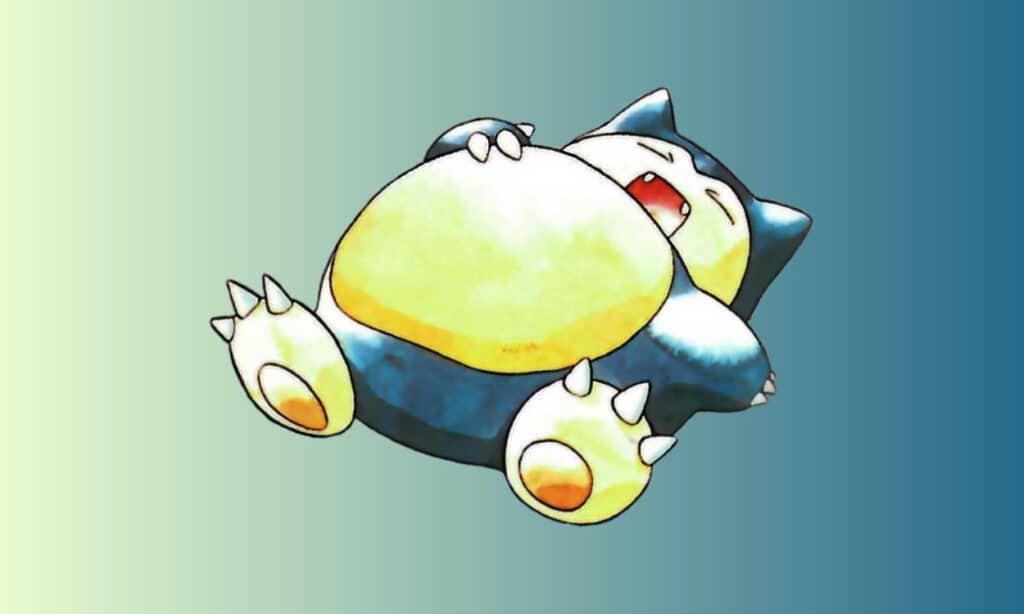
Snorlax is a massive, sleepy Pokémon with a prominent belly and a relaxed expression. It does not evolve from or into any other Pokémon in Generation I, although, like Pikachu, players saw its pre-evolutionary form in later games. It’s one of few Pokémon that is cute despite its massive size.
Snorlax’s impressive HP and attack stats make it a formidable tank in battle. A popular strategy for using Snorlax is to send it out and let it absorb damage (and heal up using Rest) while you use healing items on your other Pokémon. Snorlax is a Normal-type Pokémon, though, so despite its defensive capabilities, Fighting-type moves can lay it low in short order.
Snorlax is memorable for its humorous habit of falling asleep in inconvenient locations in the early games, blocking the player’s path. Trainers must then use a Poké Flute to wake it up, battle it, and capture it if desired. Its humorous appearance, gentle and lovable demeanor, and unique role in the Pokémon games have made it an icon in the series.
Eevee
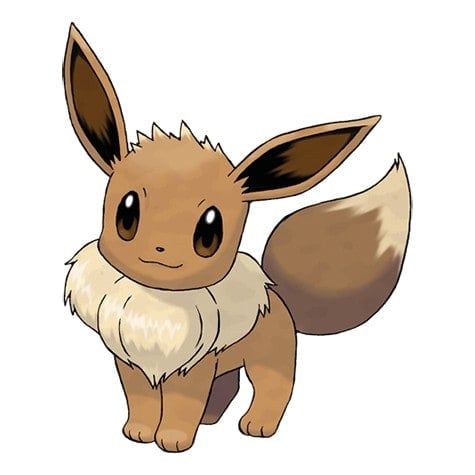
Eevee is a cute, fox-like Pokémon that can evolve into various forms. Currently, there are eight different Eevee evolutions (lovingly dubbed “Eeveelutions” by fans, although this is not an official term). In the Generation 1 Pokémon games, Eevee has three evolutions: Vaporeon, Jolteon, and Flareon.
Eevee will evolve into the Electric-type Jolteon when exposed to a Thunder Stone, the Water-type Vaporeon when exposed to a Water Stone, and the Fire-type Flareon with a Fire Stone. Eevee’s type adaptability allows it to fill various roles on your team based on its chosen evolution.
Eevee is an attractive “gap fill” if your team needs a particular type of Pokémon and no better substitute is available. For instance, trainers can use Vaporeon if they chose Charmander or Bulbasaur as their starter or could add Flareon to their team if they chose Bulbasaur or Squirtle.
Eevee’s charming appearance and unique evolutionary tree made it something of an unofficial mascot for the early Pokémon games. In recent years, it has become an official series mascot and starred in its own game, Pokémon: Let’s Go Eevee!
Gengar
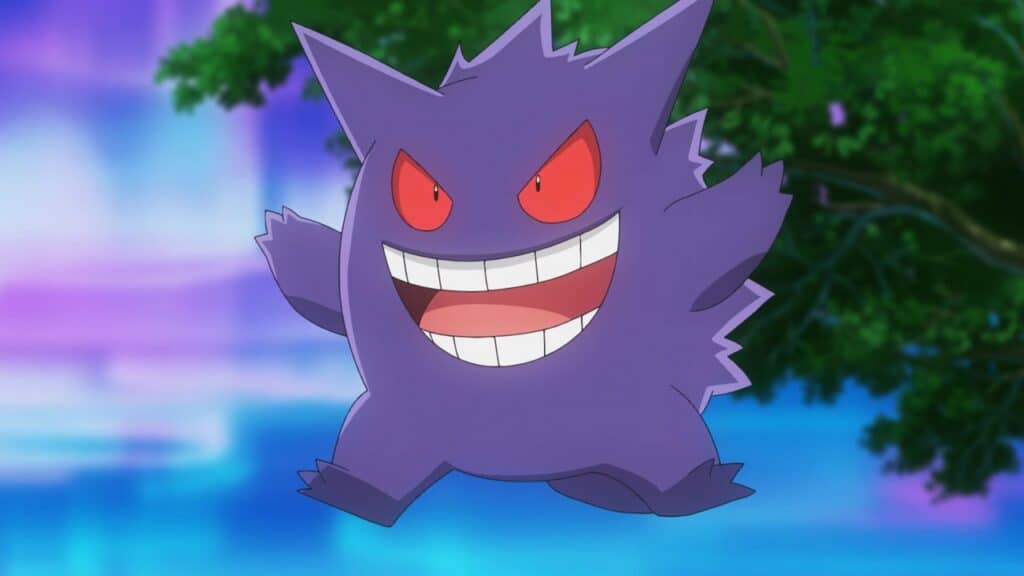
Gengar is a Hybrid Ghost/Poison-type Pokémon resembling a mischievous, shadowy figure with a devilish grin. It’s the final evolution of Gastly, which evolves into Haunter at level 25. In Generation 1 games, Haunter must be traded with another trainer to trigger its evolution into Gengar.
Gengar’s high speed and special attack stats make it a potent and tricky offensive Pokémon. Its Ghost/Poison typing gives it a moveset that’s effective against Grass, Fairy, Ghost, and Psychic-type opponents. Ground, Ghost, Psychic, and Dark-type moves are its weaknesses. Ghost types are notable for being weak to other Ghost types, which is something to be aware of.
Gengar’s eerie (yet somehow cute) design, playful yet sinister demeanor, and association with urban legends make it a standout icon in the Generation 1 Pokémon games.
Dragonite
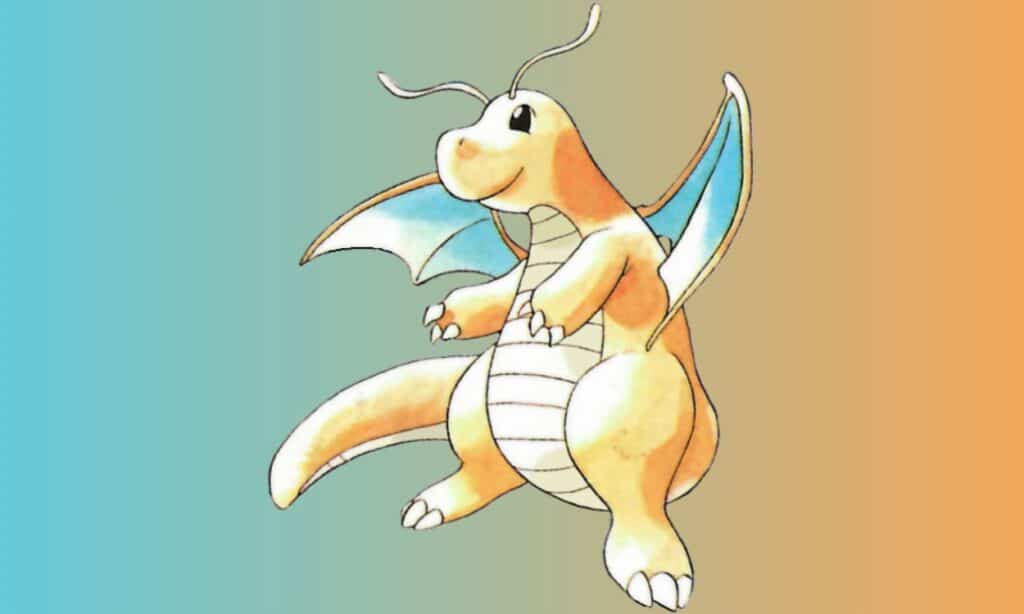
Rounding off our list of the top 10 iconic Pokémon from Generation 1 is the mighty Dragonite. This Dragon/Flying-type Pokémon has a friendly, somewhat goofy, and lovable appearance. Dragonite is the final form of Dratini. It has higher level requirements for evolution, as is the norm with Dragon-type Pokémon: Dratini evolves into Dragonair at level 30 and Dragonite at level 55.
Dragonite boasts impressive attack, special attack, and defense stats. It has pretty high stats across the board, with 600 base stat points (a higher total than many Legendaries). This gives it solid offensive and defensive potential.
Its Dragon/Flying typing also makes it effective against Bug, Fighting, Grass, and other Dragon-type Pokémon. Fairy, Rock, Ice, and Dragon-type moves can be a problem for Dragonite.
Dragonite is also notable for standing seven feet tall, almost two feet taller than Charizard. Its surprising transformation from the initially unassuming Dratini, its role as a pseudo-legendary Pokémon, and its memorable appearances in the Pokémon animated series earn Dragonite a spot on our list.
Final Word
And there you have it. In our opinion, these are the top 10 most iconic Generation 1 Pokémon. We won’t lie: There are a ton of awesome Generation 1 Pokémon, and it was tough to narrow this list down to just 10. We were tempted to expand the list to 12 or 15 but wanted to keep it simple. At the very least, we can include some honorable mentions: Geodude/Golem, Onix, Chansey, Magikarp/Gyrados, Clefairy, Jigglypuff, Meowth, Machop/Machoke, Ditto, and Cubone are other Generation 1 Pokémon we love. These all deserve their due credit, but they didn’t quite make the top 10.
All of the Generation 1 Pokémon listed here have captured the hearts of fans since the first games hit the shelves more than 20 years ago. Their enduring popularity and significance in the Pokémon world showcase the lasting impact that Pokémon Red and Blue have made on the series. To this day, these icons continue to enchant both new and longtime Pokémon trainers, reminding us of the magic that began over two decades ago.
